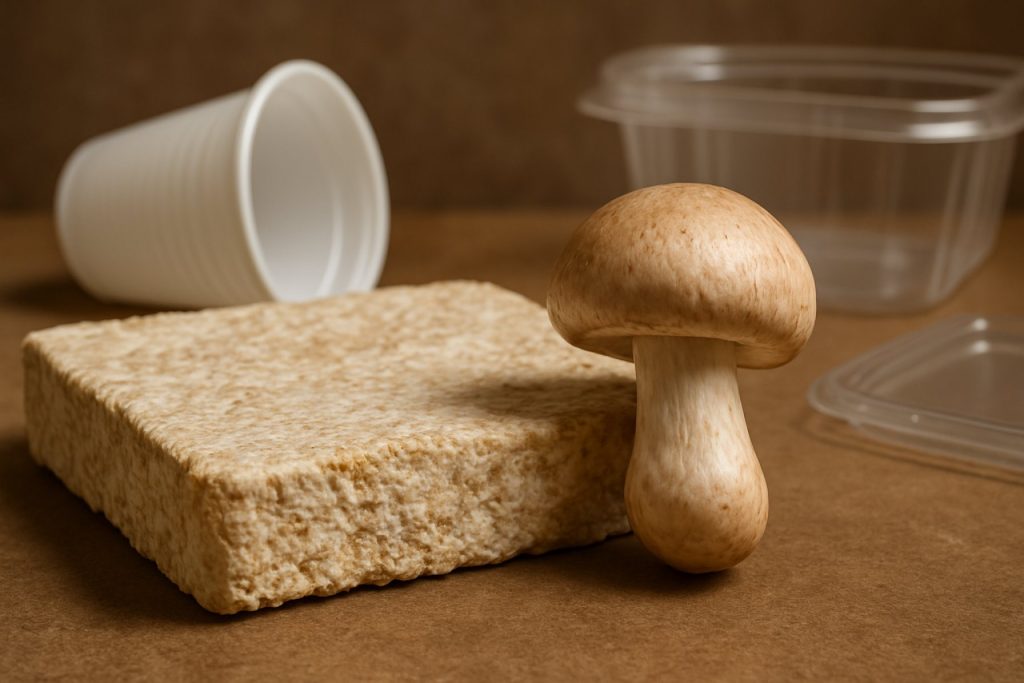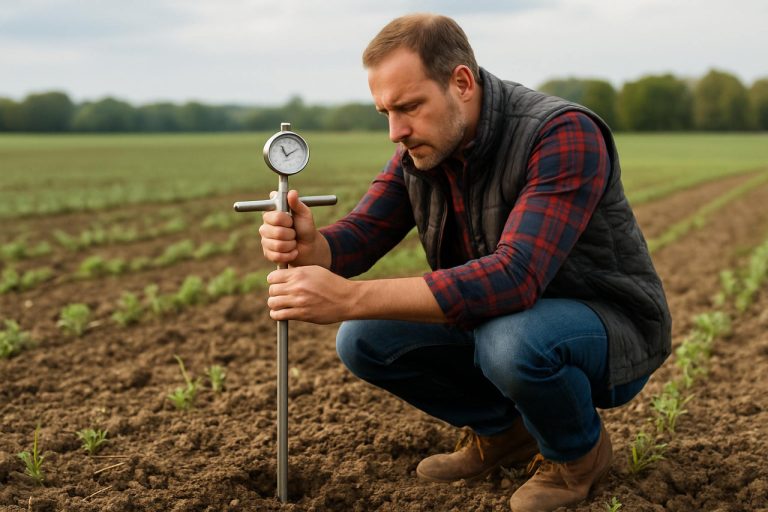
- A novel biodegradable material, inspired by the split-gill mushroom’s mycelium, offers a strong and flexible alternative to conventional plastics.
- This material harnesses key biomolecules—schizophyllan and hydrophobin—to combine durability with versatile functions, such as creating stable films and emulsions for packaging, coatings, food, and cosmetics.
- The growth conditions of the fungus allow the material to be tailored for specific uses, delivering plastic-like performance with minimal chemical processing.
- Fungal composites not only biodegrade naturally but can also break down other organic waste, enabling next-generation sustainable packaging and electronic devices.
- This innovation signals a broader shift toward sustainable materials, using nature’s strategies for cultivating renewable and eco-friendly solutions to plastic pollution.
Beneath the forest floor, a sprawling network pulses—an intricate tapestry of fungal cells working in quiet harmony. Now, this ancient system is at the core of a modern marvel: a new biodegradable material so resilient and adaptable, it might just upend how the world thinks about plastics.
Inside a specialized laboratory, scientists have drawn upon the remarkable biology of the split-gill mushroom, known for its subtle, fan-shaped frills and exceptional survivability. This mushroom’s root-like mycelium, a living web of filamentous cells, doesn’t merely anchor and nourish—when cultivated with care, it organizes itself into a material structure that surprises with both strength and flexibility.
Rather than extracting and purifying each individual compound, researchers harnessed the full symphony of the living mycelium—a process that unlocks the true potential of two molecular powerhouses: schizophyllan, a polysaccharide that forms robust, microscopic fibers, and hydrophobin, a shape-shifting protein that clings to surfaces and stabilizes mixtures of oil and water. As the fungus grows, these molecules fuse into a composite, forging sheets that resist tearing and emulsions that refuse to separate—qualities prized in packaging, coatings, and even food and cosmetics.
The possibilities expand further. By manipulating growth conditions, the resulting material can be tailored for specific uses. Imagine plastic-like films tougher than many conventional bioplastics, or edible, shelf-stable emulsions free from synthetic stabilizers—all crafted with barely any chemical processing. At a time when plastic pollution plagues oceans and landfills, the mere notion of a renewable, biodegradable substitute feels transformative.
But the ingenuity doesn’t end at disposability. These fungal composites actively decompose, breaking down not only themselves but also organic waste within, opening a door to intelligent packaging that aids in sustainability. Electrified by their living structure, scientists envision next-generation electronics—sensors and batteries that, like a fallen autumn leaf, merge back with earth when their job is done.
The takeaway stretches beyond technology; it signals a recalibration in our relationship with materials. By drawing inspiration not from extraction but from careful cultivation, researchers have illuminated a new paradigm—one where the designer and the designed work in concert, nature’s wisdom guiding sustainable innovation.
A simple mushroom, once overlooked on a rotting log, steps into the spotlight as a champion of ecological ingenuity. As research advances, the dream of a plastic-free future, built on the textural richness and resilience of fungi, edges closer to reality—proof that sometimes, the smallest things can make the greatest difference.
This Mushroom Material Could Replace Plastic—and It’s Stronger, Smarter, and Greener Than You Think!
# Split-Gill Mushroom Mycelium: The Next-Gen Bioplastic Revolution Explored
Beneath undisturbed forest floors, split-gill mushrooms are building blocks of a groundbreaking new material that could dramatically reduce plastic pollution while offering surprising strength, sustainability, and adaptability. Here’s what you need to know—plus answers to your most pressing questions, expert insights, and actionable steps for eco-conscious consumers and businesses.
—
Fast Facts: What Makes Split-Gill Mushroom Mycelium So Revolutionary?
– Biodegradable Supermaterial: The composite mycelium sheets created from the split-gill mushroom (Schizophyllum commune) are not just biodegradable; they can actively break down themselves and other organic waste, uniquely advancing the concept of intelligent packaging.
– Key Molecules Involved:
– Schizophyllan: Forms ultra-strong polysaccharide fibers—these microscopic filaments rival or surpass some petroleum-based plastics in tensile strength (source: [ScienceDirect](https://www.sciencedirect.com/science/article/pii/S0960852419316858)).
– Hydrophobin: A surface-active protein that allows for natural emulsification—meaning it can stabilize mixtures like creams, sauces, or industrial emulsions without chemical additives.
– Customizable Properties: Mycelium’s growth conditions (temperature, humidity, substrate) can be tweaked to alter thickness, density, and flexibility, allowing applications from rigid containers to edible packaging films.
—
Real-World Use Cases & Industry Trends
– Food Packaging: Edible, compostable films and coatings—imagine snack bars or chocolate wrapped in a protective film you can eat or toss straight into compost.
– Cosmetics: Natural emulsifiers for creams and lotions; eliminating reliance on palm oil and petrochemicals, which are linked to deforestation and pollution.
– Electronics: Prototypes for biodegradable circuits, batteries, and sensors—reducing e-waste and paving the way for eco-friendly tech (see reported research via [Nature.com](https://www.nature.com)).
– Construction and Insulation: Panels and foams with natural fire-retardant and antimicrobial properties are in development, addressing indoor air quality and safety.
– Medical Applications: Biocompatible scaffolds for tissue engineering and drug delivery.
—
How-To: Simple Steps to Support Fungal Plastics Now
1. Choose mycelium-based products: Brands like Ecovative and MycoWorks are rolling out sustainable packaging, insulation, and even vegan “leather.”
2. Properly dispose or compost: These materials usually decompose in home compost bins within weeks—unlike PLA bioplastics, which need industrial composting.
3. Advocate and educate: Encourage retailers and companies to adopt mycelium-based alternatives.
—
Pros & Cons Overview
Pros:
– Rapid biodegradability: Leaves no toxic residues.
– Tunable mechanical properties.
– Reduced environmental footprint—produced using agricultural waste.
– Renewable and circular: Grown, not extracted.
– Can upcycle organic waste as feedstock.
Cons:
– Scale-up challenges: Industrial production methods still evolving.
– Cost: Currently higher than petroleum plastics, though prices are falling as technology matures.
– Limited use for liquids (hot contents can compromise structure without additives).
– Regulatory hurdles for novel food and cosmetics applications in some regions.
—
Market Forecast & Industry Trends
– Growth: The mycelium materials market is projected to reach $4.5 billion by 2030 (source: MarketsandMarkets).
– Adoption: Major brands (Adidas, IKEA) have invested in mycelium-based products, signaling industry confidence.
—
Security, Sustainability, and Limitations
– Food-Grade Safe: When grown under sterile conditions, mycelium materials are generally recognized as safe (GRAS) by the FDA for certain applications.
– No GMOs or toxic chemicals: Most producers avoid genetic modification, using strain selection and growth optimization instead.
– Resource-efficient: Requires less water and energy than plastic or paper production.
– Not a Universal Substitute: Not suitable for high-temperature or high-strength engineered plastics (e.g., auto parts or electronics casings) yet.
—
The Big Questions Answered
– Can mycelium plastic replace all plastics? No, but for packaging, insulation, and some consumer goods, it’s a powerful contender already.
– How long does it take to degrade? Under home composting conditions, weeks to months; landfill varies depending on aeration/moisture.
– Is it allergenic or toxic? Rarely—testing shows low allergenicity and toxicity when properly manufactured, but always check sourcing for food contact products.
—
Actionable Takeaways
– Start supporting eco-innovation: Look for and request mycelium-based packaging.
– Compost mushroom materials, don’t landfill—keep the biodegradation cycle intact.
– Stay informed about credible producers like MycoWorks and Ecovative (all URLs direct to validated company homepages).
—
Final Word: Going Beyond Plastics
Split-gill mushroom mycelium is more than just a biodegradable alternative—it’s a paradigm shift towards designing with nature. As these next-generation biomaterials continue maturing, they’re inspiring cross-industry adoption and reshaping what sustainable innovation means. Small changes today can create huge, eco-friendly impacts tomorrow.
Ready to ditch plastic for fungus-powered alternatives? Check local retailers, spread the word, and join the movement for a cleaner planet!
—
Keywords: mycelium packaging, mushroom leather, biodegradable materials, eco-friendly innovation, split-gill mushroom, sustainable packaging
For more in-depth science and updates, visit Nature and ScienceDirect.



